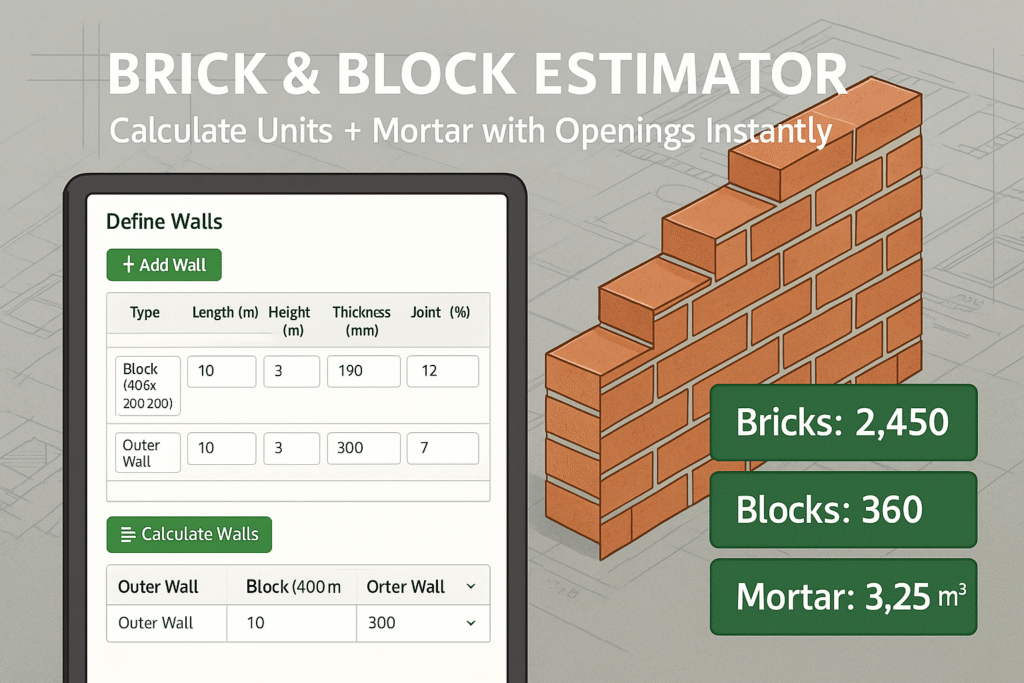Use our free brickwork estimator to calculate bricks, blocks, mortar, and wall volume for multiple walls. Supports opening deductions and report generation.


Use our free brickwork estimator to calculate bricks, blocks, mortar, and wall volume for multiple walls. Supports opening deductions and report generation.